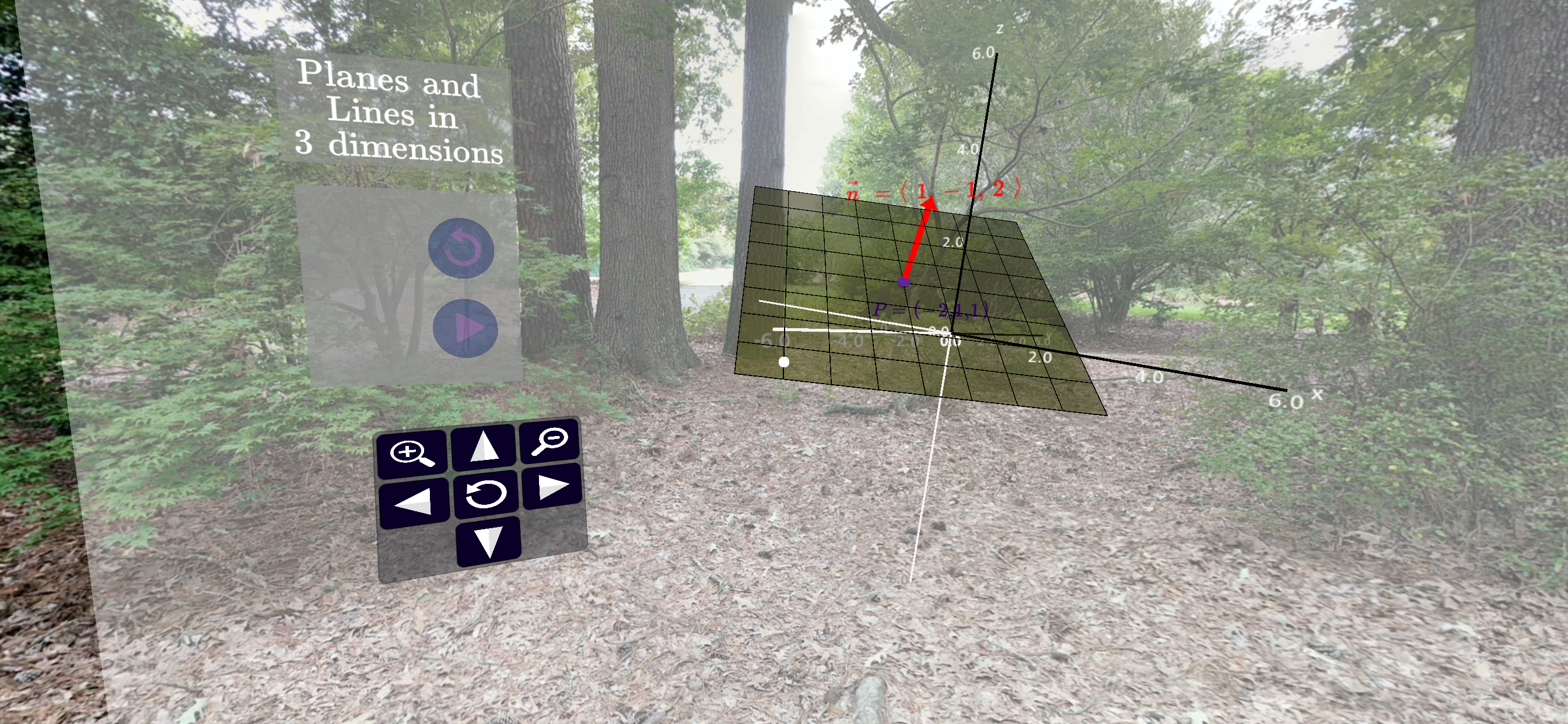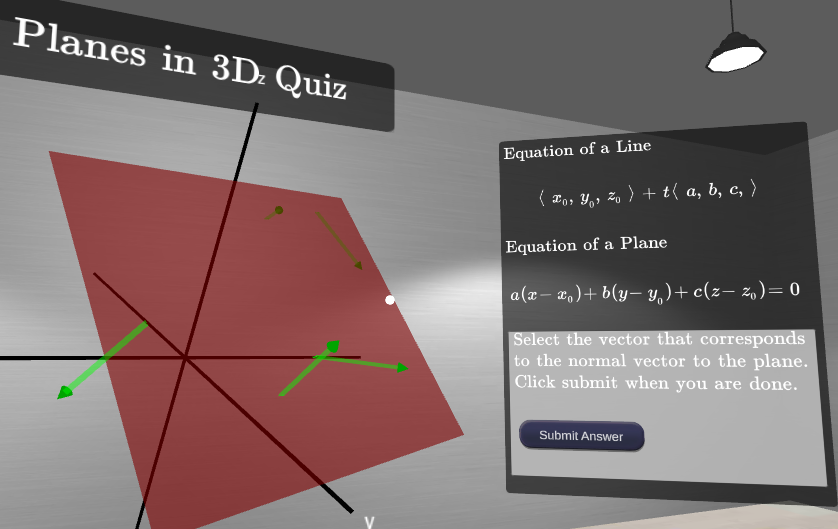Consider the two equations for the planes:
\begin{align}
2x-y+3z & =4 \tag{3.4.3}\\
x-3y+z & =-3 \notag
\end{align}
Multiplying the second equation by \(-3\) we get
\begin{align*}
2x-y+3z & =4 \\
-3x+9y-3z & =9
\end{align*}
Adding these equations together we get an equation of two variables
\begin{equation*}
-x+8y = 13.
\end{equation*}
So we need to find \(x,y\) that satisfy the above. There are a lot of ways to accomplish this. You could pick your favorite number and plug it in for either \(x\) or \(y\text{.}\) Afterwards you could solve for the other variable. Let’s use this strategy and let \(y=2\text{.}\) The above equation reduces to
\begin{equation*}
-x+16 =13
\end{equation*}
and thus we get
\(x=3\text{.}\) At this point we have
\(x=3\) and
\(y=2\text{.}\) To find the value for
\(z\) we can use either of the plane equations in
(3.4.3). We use the first one and substitute our values for
\(x\) and
\(y\) to achieve
\begin{equation*}
2(3)-2+3z = 4,
\end{equation*}
which gives us
\(z=0\text{.}\) We have found the point
\((3,2,0)\text{.}\) To verify the point
\((3,2,0)\text{,}\) we substitue the values into both the plane equation found in
equation (3.4.3). When we do this we get
\begin{align*}
2(3)-2+3(0) & =4 \\
-3(3)+9(-2)-3(0) & =9.
\end{align*}
Since both equation are satisfied, the point \((3,2,0)\) is on both planes and thus on the line of intersection of the planes.

